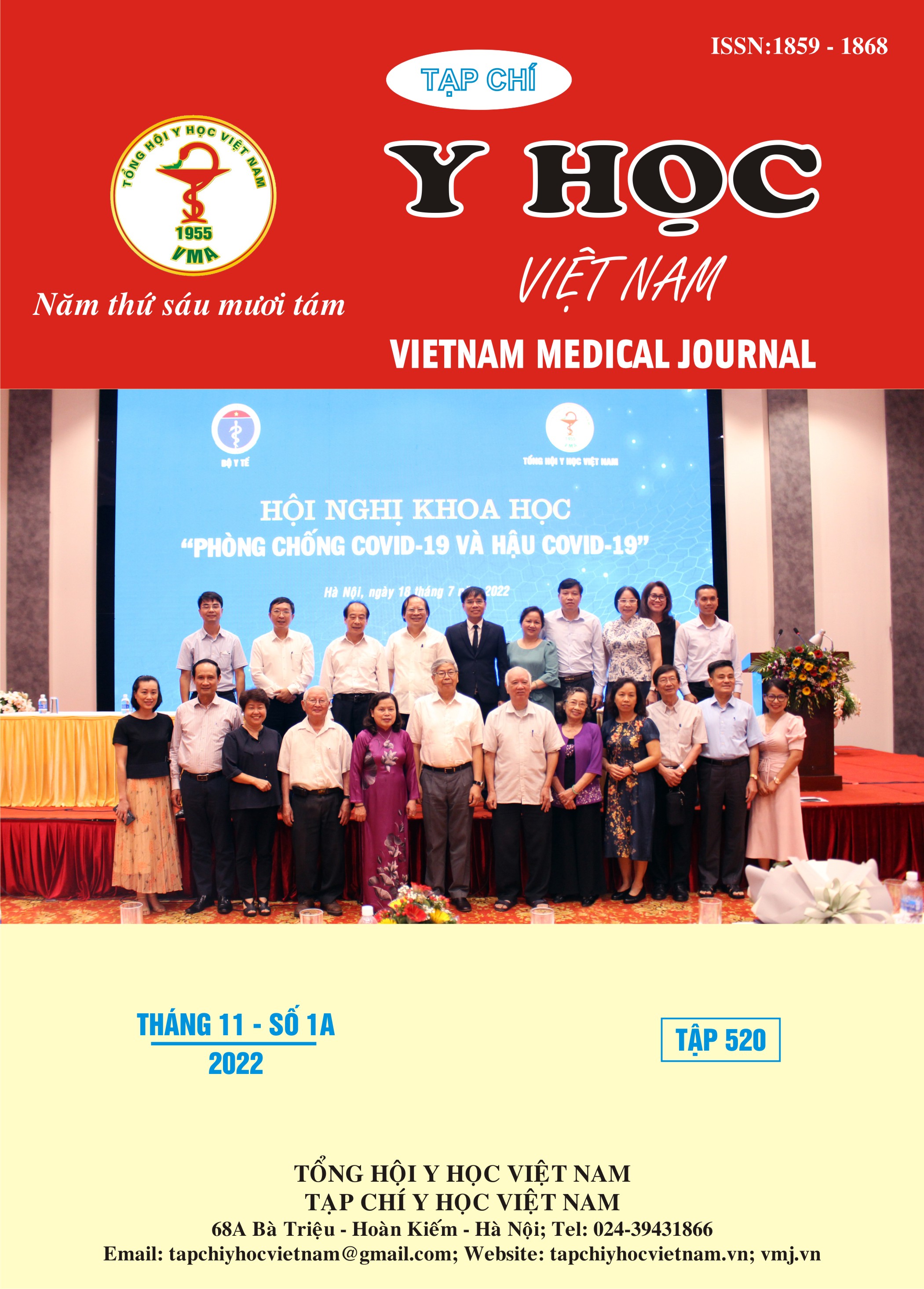ANTIBIOTIC RESISTANCE AND OUTCOME OF DEEP NECK INFECTION BY STREPTOCOCCUS SPECIES
Main Article Content
Abstract
Background: Streptococcus sp. are the most common gram- positive bacterial pathogen in deep neck infection. Antibiotic resistance of Streptococcus sp. places an important role in choosing an appropriate initial antibiotic therapy. Objectives: Investigating the antibiotic resistance and outcome of deep neck infection caused by Streptococcus sp. in Cho Ray hospital from 06/2021 to 06/2022. Methods: Description of 77 patients with deep neck infection caused by Streptococcus sp. in Cho Ray hospital from 06/2021 to 06/2022. Results: Streptococcus sp. were highly resistant to Clindamycin and Erythromycin: Streptococcus anginosus group (SAG) (70.4%, 69.2%), other subgroups of Viridan Streptococci group (61.1%, 73.3%) and β- hemolytic Streptococci group (75%, 80%, respectively). The SAG group was resistant to Penicillin (30.2%) and Cephalosporin (1.9%). Other subgroups of Viridan Streptococci group were resistant to Penicillin (55.5%) và Cephalosporin (11.1%). The β- hemolytic Streptococci group was sensitive 100% to Penicillin and Cephalosporin. Streptococcus sp. were sensitive 100% to Linezolide, Vancomycin. All patients in study had good outcome. The mean of hospitalization was 10.2 ± 6.1 days. Conclusions: Streptococcus sp. in deep neck infections mainly belong to Viridans Streptococci group in which the SAG group predominates. Streptococcus sp. are highly resistant to Erythromycin and Clindamycin. The Viridans Streptococci group has strains that are resistant to β-lactam antibiotics. The outcome of all patients with deep neck infection caused by Streptococcus sp. is good.
Article Details
Keywords
Deep neck infection, antibiotic resistance, Streptococcus sp
References
2. Barros RR. Antimicrobial Resistance among Beta-Hemolytic Streptococcus in Brazil: An Overview. Antibiotics (Basel). Aug 12 2021;10(8) doi:10.3390/antibiotics10080973
3. Chun S, Huh HJ, Lee NY. Species-specific difference in antimicrobial susceptibility among viridans group streptococci. Annals of Laboratory Medicine. 2015;35(2):205.
4. Phạm Trung Việt, Nguyễn Thị Ngọc Thảo, Hoàng Bá Dũng. Tình hình sử dụng kháng sinh theo kinh nghiệm đối với các trường hợp nhiễm trùng cổ sâu tại khoa tai mũi họng bệnh viện chợ rẫy từ tháng 01/2019 đến tháng 01/2020. 2020,
5. Fazili T, Riddell S, Kiska D, et al. Streptococcus anginosus Group Bacterial Infections. Am J Med Sci. Sep 2017;354(3):257-261. doi:10.1016/j.amjms.2017.05.011
6. Haenni M, Lupo A, Madec JY. Antimicrobial Resistance in Streptococcus spp. Microbiol Spectr. Mar 2018;6(2)doi:10.1128/microbiolspec.ARBA-0008-2017
7. Al Majid F, Aldrees A, Barry M, Binkhamis K, Allam A, Almohaya A. Streptococcus anginosus group infections: Management and outcome at a tertiary care hospital. Journal of Infection and Public Health. 2020/11/01/ 2020;13(11):1749-1754. doi:https://doi.org/10.1016/j.jiph.2020.07.017


